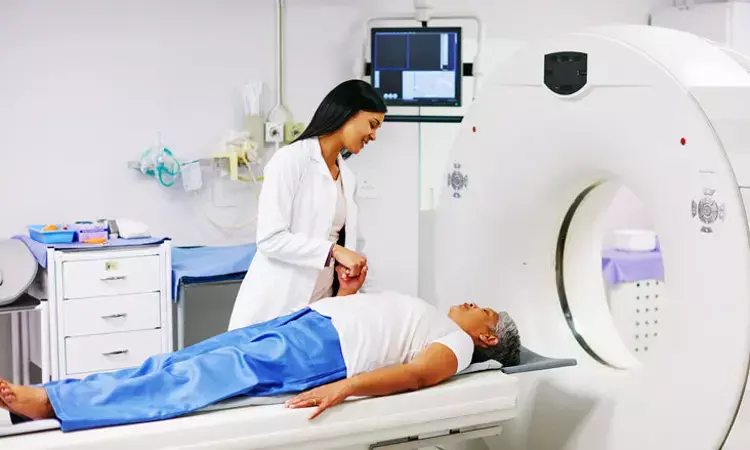- Home
- Medical news & Guidelines
- Anesthesiology
- Cardiology and CTVS
- Critical Care
- Dentistry
- Dermatology
- Diabetes and Endocrinology
- ENT
- Gastroenterology
- Medicine
- Nephrology
- Neurology
- Obstretics-Gynaecology
- Oncology
- Ophthalmology
- Orthopaedics
- Pediatrics-Neonatology
- Psychiatry
- Pulmonology
- Radiology
- Surgery
- Urology
- Laboratory Medicine
- Diet
- Nursing
- Paramedical
- Physiotherapy
- Health news
- Fact Check
- Bone Health Fact Check
- Brain Health Fact Check
- Cancer Related Fact Check
- Child Care Fact Check
- Dental and oral health fact check
- Diabetes and metabolic health fact check
- Diet and Nutrition Fact Check
- Eye and ENT Care Fact Check
- Fitness fact check
- Gut health fact check
- Heart health fact check
- Kidney health fact check
- Medical education fact check
- Men's health fact check
- Respiratory fact check
- Skin and hair care fact check
- Vaccine and Immunization fact check
- Women's health fact check
- AYUSH
- State News
- Andaman and Nicobar Islands
- Andhra Pradesh
- Arunachal Pradesh
- Assam
- Bihar
- Chandigarh
- Chattisgarh
- Dadra and Nagar Haveli
- Daman and Diu
- Delhi
- Goa
- Gujarat
- Haryana
- Himachal Pradesh
- Jammu & Kashmir
- Jharkhand
- Karnataka
- Kerala
- Ladakh
- Lakshadweep
- Madhya Pradesh
- Maharashtra
- Manipur
- Meghalaya
- Mizoram
- Nagaland
- Odisha
- Puducherry
- Punjab
- Rajasthan
- Sikkim
- Tamil Nadu
- Telangana
- Tripura
- Uttar Pradesh
- Uttrakhand
- West Bengal
- Medical Education
- Industry
3D liver segmentation helps identify fatty liver on cardiac CT: Study

A 3D liver segmentation technique can be useful to quickly diagnose and measure fatty liver on cardiac CT exams, according to research presented at the annual meeting of the Society of Cardiovascular Computed Tomography (SCCT).
The research has also been published in the Journal of Cardiovascular Computed Tomography.
The researchers sought to evaluate the reproducibility of a novel approach of three dimensional, 3D liver volume segmentation to identify fatty liver on non-contrast cardiac CT, and compare measures with previously validated 2D segmentation CT criteria for measurement of liver fat.
Non Alcoholic Fatty Liver disease (NAFLD) shares multiple risk factors with cardiovascular disease (CVD) and independently predicts increased risk of CVD and related outcomes.
Liver fat measures generated by 2D segmentation on cardiac CT have been correlated with the gold standard of invasive liver biopsy and used in research studies. But the 2D method is inaccurate for diagnosing low-fat content and lacks stability with repeat measures", Dr. Suvasini Lakshmanan, an advanced cardiac imaging fellow and the presenter was quoted.
Dr. Lakshmanan further stated that "Non-alcoholic fatty liver disease (NAFLD) shares multiple risk factors with cardiovascular disease and independently predicts increased risk of cardiovascular disease and its associated adverse outcomes".
A previous study named, the EVAPORATE trial offered a rare chance to confirm the prevalence and progression of NAFLD on cardiac CT in a high-risk population, according to Dr. Lakshmanan. This trial was conducted over 18 months, wherein the patients in the EVAPORATE trial were kept on stable statin therapy with low-density lipoprotein cholesterol levels (40 to 115 mg/dl) and persistently high triglyceride levels.
In a new study conducted by a group of researchers from the Lundquist Institute at Harbor-UCLA Medical Center in Torrance, California, U.S.A., both 3D and 2D segmentation in over a total of 100 patients receiving serial non-contrast cardiac CT examinations were included.
Following which the fatty liver was diagnosed based on liver attenuation of less than 40 Hounsfield units. Both 2D and 3D liver segmentation was performed on the non-contrast cardiac CT images using software from Philips Healthcare, according to Dr. Lakshmanan.
Following which they found that the 3D method was stable and reproducible for measuring liver fat. Also, they found a kappa of 88% when 2D and 3D liver measurements both identified fatty liver, indicating excellent agreement.
Dr. Suvasini Lakshmanan was quoted as, "The measure can serve as an imaging biomarker to understand mechanistic correlations between atherosclerosis, fatty liver, and cardiovascular disease risk."
She concluded by stating, "Nonetheless serial assessments of Non-alcoholic fatty liver disease (NAFLD) on cardiac CT will allow for future research to evaluate the effect of anti-inflammatory or anti-atherosclerotic therapies on cardiovascular disease and fatty liver."
For more information refer to:
Measurement Of Liver Fat By A Novel 3d Segmentation Method Of Liver On Non Contrast Cardiac Ct In Evaporate Cohort: Methods And Reproducibility
DOI: https://doi.org/10.1016/j.jcct.2021.06.243
Dr. Shravani Dali has completed her BDS from Pravara institute of medical sciences, loni. Following which she extensively worked in the healthcare sector for 2+ years. She has been actively involved in writing blogs in field of health and wellness. Currently she is pursuing her Masters of public health-health administration from Tata institute of social sciences. She can be contacted at editorial@medicaldialogues.in.
Dr Kamal Kant Kohli-MBBS, DTCD- a chest specialist with more than 30 years of practice and a flair for writing clinical articles, Dr Kamal Kant Kohli joined Medical Dialogues as a Chief Editor of Medical News. Besides writing articles, as an editor, he proofreads and verifies all the medical content published on Medical Dialogues including those coming from journals, studies,medical conferences,guidelines etc. Email: drkohli@medicaldialogues.in. Contact no. 011-43720751


